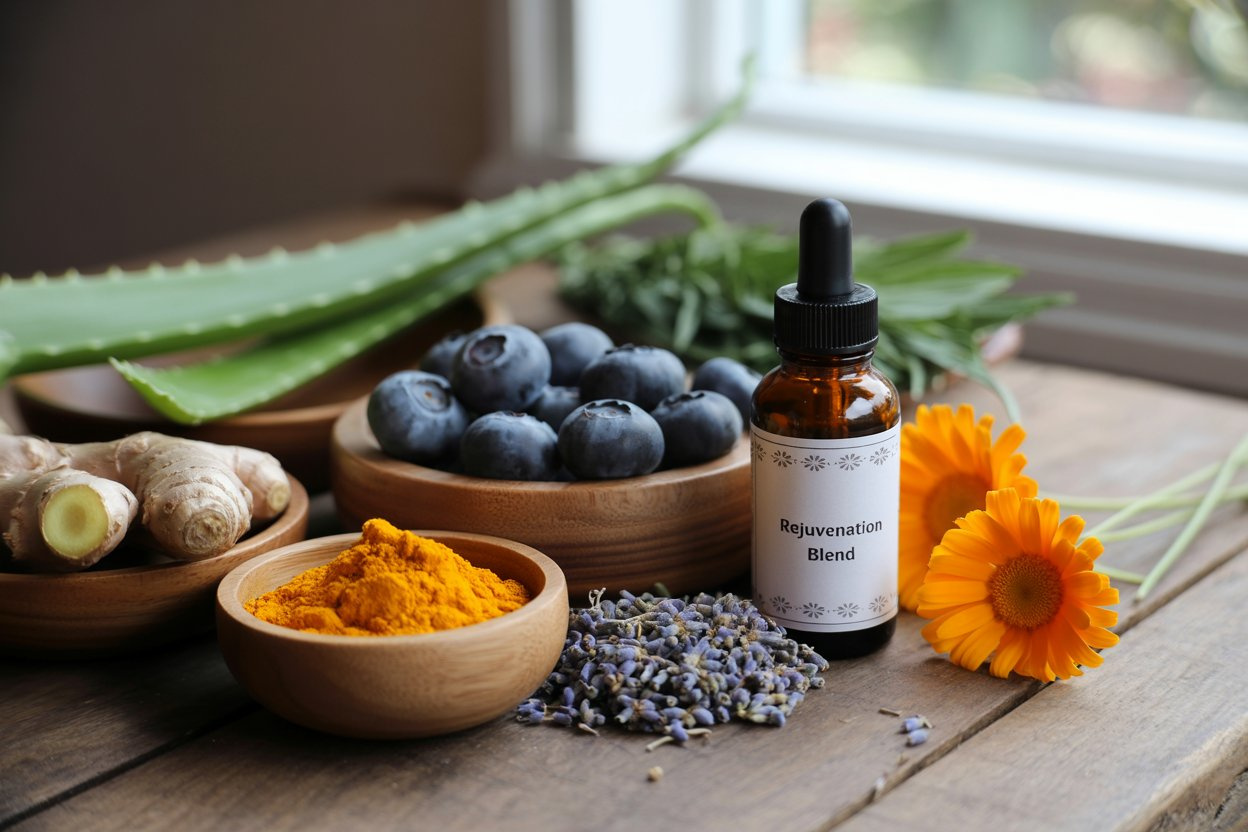
In today’s rapidly evolving skincare industry, a clear transformation is underway. More and more consumers are turning away from synthetic ingredients and embracing nature-driven alternatives in their quest for healthy, radiant skin. Beauty is no longer defined by chemical complexity alone, but by the powerful intersection of ancient wisdom and modern science.
At the heart of this movement is Ayurveda, India’s time-tested system of holistic healing. Once practiced primarily in traditional homes and wellness retreats, Ayurvedic skincare is now gaining widespread recognition in the global beauty arena. No longer seen as merely folkloric or alternative, its principles are being examined and validated by contemporary dermatological research. This 5,000-year-old philosophy is proving itself not only relevant but remarkably forward-looking.
In this article, we explore how Ayurvedic skincare bridges the gap between tradition and innovation—delivering clean, conscious beauty solutions that align with the needs of today’s discerning consumer.
Understanding Ayurveda: The Foundation of Holistic Skincare
At its core, Ayurveda is not merely a system of medicine but a philosophy of life. It emphasises harmony between the individual and their environment, seeking balance in body, mind, and spirit. This equilibrium is essential for maintaining not just health, but beauty.
Ayurveda classifies individuals according to doshas—biological energies formed from the five elements: earth, water, fire, air, and ether. These doshas influence both the body and mind, and play a key role in determining skin type and behaviour. The three primary doshas are:
- Vata (Air and Ether):Vata-dominant skin is usually dry, thin, and delicate. It may be prone to flakiness, premature ageing, and increased sensitivity to cold or windy environments.
- Pitta (Fire and Water):Pitta skin tends to be sensitive, warm, and prone to redness or inflammation. It is more likely to experience acne, rosacea, or sun sensitivity, especially in hot or humid climates.
- Kapha (Earth and Water):Kapha-type skin is typically oily, thick, and resilient. It is less prone to wrinkles but can be susceptible to clogged pores, excess sebum, and conditions like cystic acne if not properly balanced.
Unlike conventional dermatology, which often treats the skin in isolation, Ayurveda considers the skin a mirror of internal wellness. It links skin issues to digestive imbalances, stress, and lifestyle misalignments—advocating treatments that work from the inside out.
Modern Dermatology Meets Traditional Healing
The convergence of modern science and Ayurveda is not speculative—it’s evidential. Researchers are increasingly interested in validating Ayurvedic claims through clinical trials and molecular studies. The outcomes have been promising.
Numerous studies have demonstrated the antimicrobial, anti-inflammatory, and antioxidant properties of Ayurvedic ingredients. These findings are reshaping the opinions of dermatologists who once regarded Ayurveda as anecdotal. Clinics and cosmetic labs are now investing in integrative dermatology, combining botanical intelligence with biotechnological precision.
The evolving perspective reflects a growing awareness: what is ancient is not necessarily outdated—it is often underexplored.
Key Ayurvedic Ingredients and Their Scientific Backing
Turmeric (Haridra): A Potent Ayurvedic Herb for Inflammation, Healing, and Skin Rejuvenation
Turmeric, known in Ayurveda as Haridra, is one of the most celebrated herbs for its wide-ranging healing properties. The active compound, curcumin, has been extensively studied for its anti-inflammatory, antioxidant, and antimicrobial effects.
- Topical Use:Turmeric is commonly applied as a paste or included in creams and masks to treat acne, eczema, psoriasis, and wounds. It helps calm inflammation, promotes healing, and reduces scarring.
- Internal Use:When consumed, turmeric supports systemic inflammation reduction, detoxification, and liver health. It's often taken in powdered form, capsules, or in traditional preparations like golden milk.
Scientific studies support turmeric’s role in managing chronic skin conditions, reducing oxidative stress, and improving collagen synthesis, making it a multifaceted skincare ally.
Neem (Azadirachta indica): A Powerful Ayurvedic Remedy for Skin Purification and Inflammation Control
Referred to as “nature’s pharmacy,” Neem is a staple in Ayurvedic dermatology. It is rich in nimbin and azadirachtin, compounds known for their antibacterial, antifungal, and anti-inflammatory properties.
- Topical Use:Neem oil, leaf extracts, and powders are widely used to treat acne, eczema, psoriasis, fungal infections, and dandruff. It helps regulate sebum production and soothes irritated skin.
- Internal Use:Consumed in capsule or decoction form, neem helps purify the blood, balance gut microbiota, and reduce internal inflammation—factors often linked to chronic skin issues.
Modern studies highlight neem’s ability to combat skin pathogens, enhance wound healing, and reduce inflammatory markers, validating its traditional use.
Sandalwood (Santalum album): A Cooling Ayurvedic Botanical for Soothing Inflammation and Enhancing Skin Clarity
Known in Ayurveda as Chandana, Sandalwood is prized for its cooling, soothing, and aromatic qualities. Its essential oil contains alpha-santalol, which has antimicrobial and anti-inflammatory effects.
- Topical Use:Often used in pastes, masks, and oils, sandalwood helps reduce redness, sunburn, and acne scars. It promotes a smooth, even-toned complexion and is frequently included in Ayurvedic beauty rituals.
- Internal Use:While less common, sandalwood may be used in Ayurvedic herbal formulations for its cooling effect on the body and mind, though this should be done under professional guidance due to potency.
Research supports its application in calming irritated skin, and inhibiting bacterial growth, especially in acne-prone individuals.
Amla (Indian Gooseberry): A Potent Ayurvedic Superfruit for Collagen Support, Skin Rejuvenation, and Antioxidant Protection
Amla, or Amalaki, is a vitamin C-rich superfruit revered in Ayurveda for rejuvenation and skin nourishment. It is a core ingredient in many Rasayana (rejuvenative) therapies.
- Topical Use:Amla extracts are included in serums, masks, and oils for their antioxidant and collagen-stimulating properties. It helps tighten skin and reduce pigmentation.
- Internal Use:Commonly consumed as powder, juice, or part of the Triphala blend, amla enhances collagen production, supports digestion, and boosts the immune system—all of which contribute to skin health from within.
Scientific findings affirm that amla’s high ascorbic acid content promotes cell regeneration, UV protection, and anti-ageing benefits.
Ashwagandha (Withania somnifera): A Stress-Relieving Ayurvedic Adaptogen That Supports Skin Health from Within
Ashwagandha, a renowned adaptogen, is known for its ability to regulate cortisol levels and combat stress-related skin conditions like acne, rosacea, and dullness.
- Topical Use:Ashwagandha-infused creams and oils are used to calm inflammation, enhance skin elasticity, and combat free radical damage.
- Internal Use:Widely consumed as powder or capsules, it reduces chronic stress, improves sleep, and balances hormonal function—key contributors to clear, resilient skin.
Modern research supports ashwagandha’s use in lowering stress biomarkers, boosting antioxidant capacity, and supporting skin barrier integrity.
Kumkumadi Oil (Kumkumadi Tailam): A Luxurious Ayurvedic Blend for Brightening, Revitalising, and Nourishing the Skin
Kumkumadi Oil, often dubbed "liquid gold," is an Ayurvedic elixir designed specifically for skin rejuvenation. It is a blend of over 20 herbs, with saffron (Kumkuma), turmeric, and sandalwood as key ingredients.
- Topical Use:Applied as a facial oil, Kumkumadi Tailam improves complexion, fades dark spots, minimises fine lines, and imparts a natural glow. It's especially revered in evening skincare routines.
- Internal Use:While typically not ingested, the ingredients within Kumkumadi Oil—like saffron and turmeric—are beneficial when consumed separately for their skin-enhancing effects.
Clinical trials and user studies show measurable improvements in skin texture, radiance, and pigmentation with consistent topical use.
Customised Skincare Through Ayurvedic Diagnosis

Personalisation lies at the heart of Ayurvedic skincare, where treatments are not based on a one-size-fits-all approach, but rather on the individual’s unique constitution, known as prakriti. This prakriti is determined by the balance of the three doshas—Vata, Pitta, and Kapha—which govern physical, emotional, and physiological traits. Understanding your dominant dosha offers a blueprint for maintaining and restoring skin health in a way that is deeply holistic and personalised.
How Dosha Types Influence Skincare
For instance, individuals with a Vata constitution, characterised by dryness, coolness, and lightness, often experience rough, flaky, or prematurely ageing skin. They benefit from rich, nourishing oils, hydrating herbs, and warming self-care rituals that ground and replenish. Conversely, Pitta-dominant individuals, prone to sensitivity, redness, and inflammation, thrive with soothing botanicals like aloe vera, sandalwood, and rose that cool and calm the skin. Kapha types, with their oily, thick skin, are better suited to cleansing and stimulating formulations, often containing astringent or detoxifying herbs to combat congestion and sluggishness.
Ayurvedic skincare doesn't stop at skin type. It also factors in seasonal variations, dietary influences, climatic conditions, and even one’s emotional state. A regimen that works in the dry winter months might need to be adjusted during the humid summer, or after a period of stress or dietary imbalance. This dynamic and adaptive philosophy allows skincare to evolve with the individual, offering long-term balance rather than short-term fixes.
In today’s world, this ancient wisdom is increasingly being integrated with modern technologies. AI-powered skin diagnostics, facial mapping, and advanced imaging tools are being combined with dosha-based analysis to create precise, data-informed recommendations. These innovations allow practitioners to validate Ayurvedic insights with clinical evidence, enhancing the accuracy of diagnosis and treatment.
This blend of tradition and innovation creates a powerful, integrative model of skincare—one that honours the individuality of the person and the complexity of the skin as a reflection of internal health.
The Gut-Skin Connection: Ayurveda’s Holistic Perspective
Long before the term “microbiome” became part of modern scientific discourse, Ayurveda emphasised the intrinsic link between digestion and skin health. In Ayurvedic philosophy, the digestive fire—known as Agni—is considered the cornerstone of vitality, immunity, and dermal clarity. A strong, balanced Agni not only governs nutrient absorption but also prevents the buildup of ama (toxins), which Ayurveda identifies as a root cause of skin disorders.
Agni, Microbiome, and Modern Science
Contemporary research increasingly echoes these ancient insights. A compromised gut microbiome is now recognised as a contributing factor in a range of skin conditions, including acne, rosacea, eczema, and psoriasis. Inflammation originating in the gastrointestinal tract can manifest externally, leading to dullness, irritation, or breakouts. This modern understanding aligns closely with Ayurvedic teachings that unhealthy digestion leads to systemic imbalance and visible skin issues.
To address this, Ayurvedic practice recommends therapies such as Panchakarma—a structured detoxification process designed to eliminate toxins, reset digestion, and balance doshas. Additionally, herbal formulations like Triphala, turmeric, and licorice are used to soothe the digestive tract and enhance metabolic function. These interventions work not only to clear the skin but to rebalance the body as a whole.
Internal cleansing in Ayurveda is not considered superficial or short-term. It is a profound healing practice rooted in restoring equilibrium from within. By harmonising the gut and supporting digestion, Ayurveda offers a truly holistic pathway to skin health—a philosophy now increasingly validated by modern integrative medicine.
Ayurvedic Rituals and Techniques with Scientific Merit
Ayurveda places great emphasis on daily rituals, or dinacharya, to maintain balance and promote long-term health—especially when it comes to skin. Many of these time-honoured practices are now gaining scientific validation for their physiological and dermatological benefits.
Timeless Techniques, Modern Backing
- Abhyanga (Self-Massage with Warm Oil):This deeply grounding ritual involves massaging the body with warm, herb-infused oils tailored to one’s dosha. Abhyanga is known to stimulate the lymphatic system, aiding in detoxification, improve blood circulation, enhancing nutrient delivery to the skin, strengthen the skin barrier, locking in moisture and elasticity, and reduce cortisol levels, as supported by studies showing decreased stress and improved skin tone following regular self-massage.
- Herbal Facial Steaming:Using steam infused with herbs like tulsi (holy basil), rose, or neem is a gentle yet effective skincare ritual. Benefits include opening of pores to enhance the absorption of herbal actives, encouraging detoxification through sweat and improved circulation, and relaxation of facial muscles, reducing the appearance of tension lines and puffiness.
- Oil Cleansing:Unlike harsh foaming cleansers, Ayurvedic oil cleansing uses oils like sesame, castor, or jojoba to dissolve makeup, dirt, and excess sebum without disrupting the skin’s natural lipid barrier, and alleviate dryness, inflammation, and even seborrheic dermatitis, as modern dermatological studies now confirm the benefits of oil-based cleansing routines.
These rituals combine sensorial pleasure with therapeutic function—bridging the ancient and the clinical for truly holistic skincare.
Sustainability and Clean Beauty in Ayurvedic Skincare
Sustainability in Ayurvedic skincare is not a marketing buzzword—it is a deeply rooted principle woven into the fabric of the tradition itself. Long before the rise of the clean beauty movement, Ayurveda emphasised harmony with nature, ethical resource use, and environmental stewardship. From the cultivation of medicinal plants to the formulation of products, each step honours ecological balance and minimises waste.
Ethical Practices Rooted in Tradition and Innovation
The herbs used in Ayurvedic skincare are typically sourced according to seasonal rhythms and regenerative harvesting practices. This not only preserves the potency of the botanicals but also protects native ecosystems from overexploitation. Many Ayurvedic producers go a step further by partnering directly with small-scale farmers and tribal communities, ensuring fair compensation and sustainable livelihoods. These fair-trade collaborations strengthen local economies while promoting biodiversity.
Modern Ayurvedic brands are also embracing green innovation in production. Solar-powered distillation units, water-saving extraction methods, and eco-conscious packaging made from recyclable or compostable materials are becoming increasingly common. These efforts help reduce the carbon footprint and bring traditional practices into alignment with contemporary environmental standards.
Choosing Ayurvedic skincare means more than nourishing your skin—it’s a decision that supports a broader ecological ethic. Each product reflects a closed-loop philosophy: ingredients are earth-derived, minimally processed, and safely return to the environment after use. This cyclical relationship mirrors Ayurveda’s core belief in interconnectedness—between the self, the community, and the planet.
Conclusion: Embracing the Future of Beauty Through Ayurveda and Science
The integration of Ayurveda and modern dermatology marks not just a fusion, but a profound evolution in skincare. By blending time-honoured healing traditions with evidence-based science, we are entering a new era—one where beauty is both intelligent and intentional.
This holistic approach invites us to re-engage with ritual, prioritise personalised care, and nurture a deeper connection with both our bodies and the natural world. It’s a shift toward skincare that is not only effective, but also ethical, sustainable, and deeply rooted in wellness.
As the demand for transparency, efficacy, and environmental responsibility grows, this synergy between ancient wisdom and modern research offers a model that meets the moment—and sets the standard for what’s to come.
Now is the time to rethink your skincare routine. Explore Ayurvedic principles, experiment with nature-powered ingredients, and choose products that honour both tradition and innovation.





